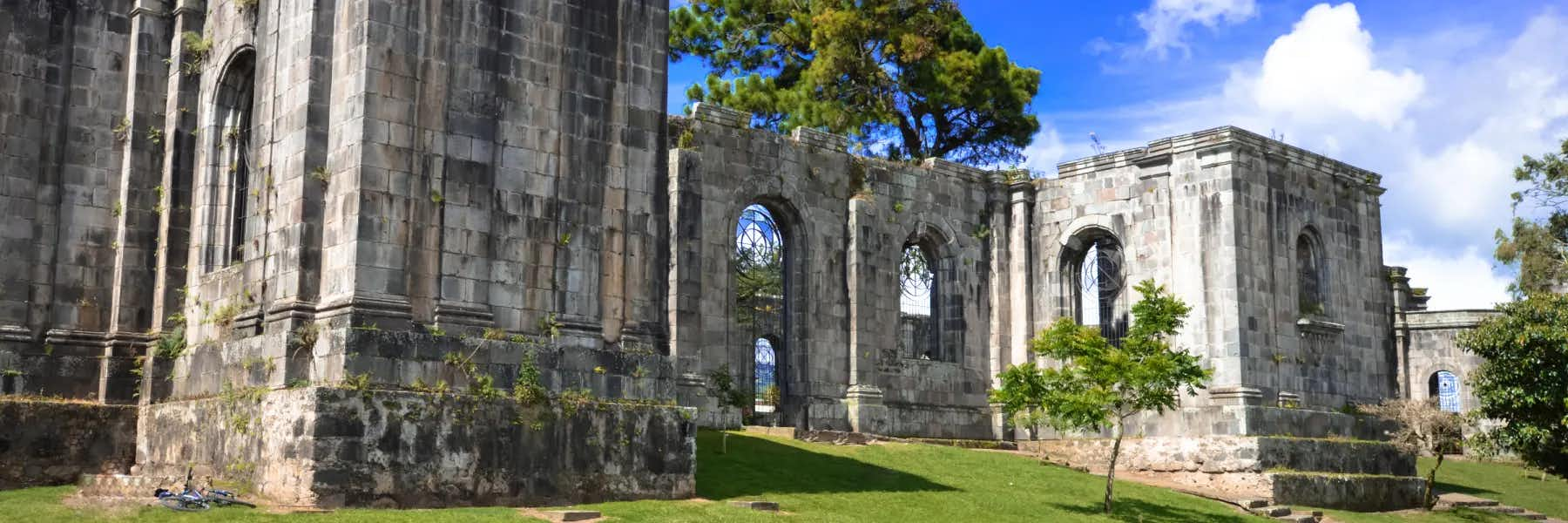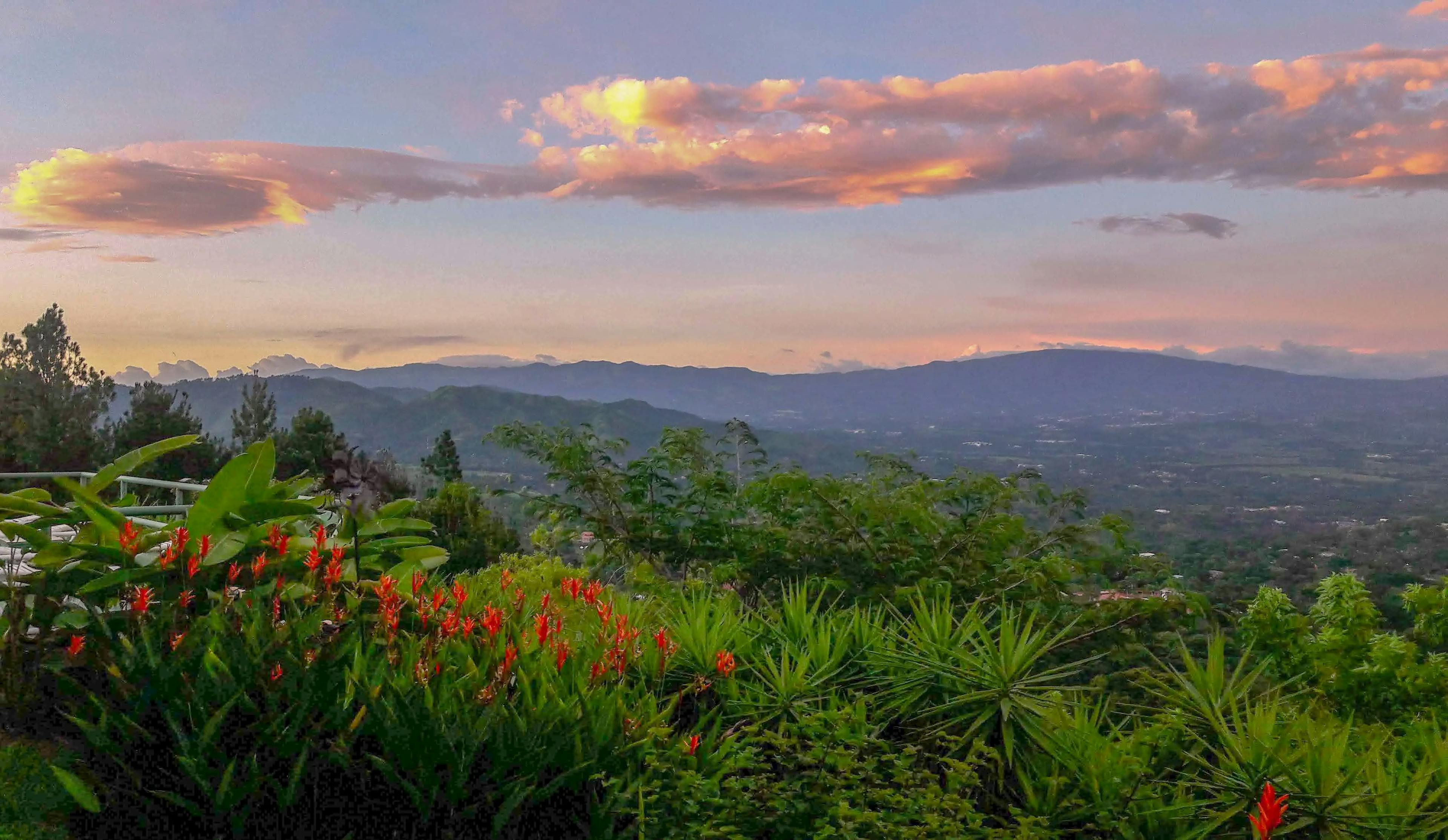With its riveting history and idyllic location, Cartago boasts a story worthy of a cinematic drama.
When it was founded by the conquistador Coronado in 1563, he reported that he had “never seen a more beautiful place.” The Spanish soon built the most majestic colonial buildings and established Cartago (which means Carthage in Spanish) as the capital of Costa Rica. Things rocked along for the next 160 years, literally—numerous earthquakes damaged the city’s structures repeatedly. Then an epic eruption of the Irazú volcano all but destroyed the city. One hundred years later, Cartago lost a civil war, and the seat of government was moved to its current position in San José.
Today, the greater Cartago area supports a population of over 150,000. Thanks to the fertile volcanic soils and the temperate climate, agriculture remains one of the most important means of economy for the area, providing a lion’s share of crops for the country. However, tourism is rocketing.
A bustling city of shopping malls and movie theaters, it is only about an hour from the international airport and is connected to San José by a four-lane highway. Lush, verdant farm lands surround the city, shade-grown coffee covers the mountain sides, and the history is palpable.
The enormous and magnificently beautiful Basilica of Our Lady of the Angels is a remarkable reminder of the city’s past. Every year, nearly half of the entire country’s population floods into Cartago for the annual pilgrimage to the holiest spot in Costa Rica. Legend has it that in 1635 the Virgin Mary repeatedly appeared as a small black statue on a rock, marking the site for a cathedral. The statue, known as La Negrita, is revered as a sacred relic.
But the past isn’t the only thing that makes this city stand out from the rest of the country. Cartago is home to the Costa Rica Institute of Technology, presently considered to be one of Central America’s most important schools of engineering.
Get Your Free Costa Rica Report Here
Get Your Free Costa Rica Report Here
Learn more about Costa Rica and other countries in our daily postcard e-letter. Simply enter your email address below and we’ll send you a FREE REPORT - Explore the Old World in Laidback Costa Rica.

By submitting your email address, you will receive a free subscription to IL Postcards and special offers from International Living and our affiliates. You can unsubscribe at any time, and we encourage you to read more about our Privacy Policy.
Retire in Cartago
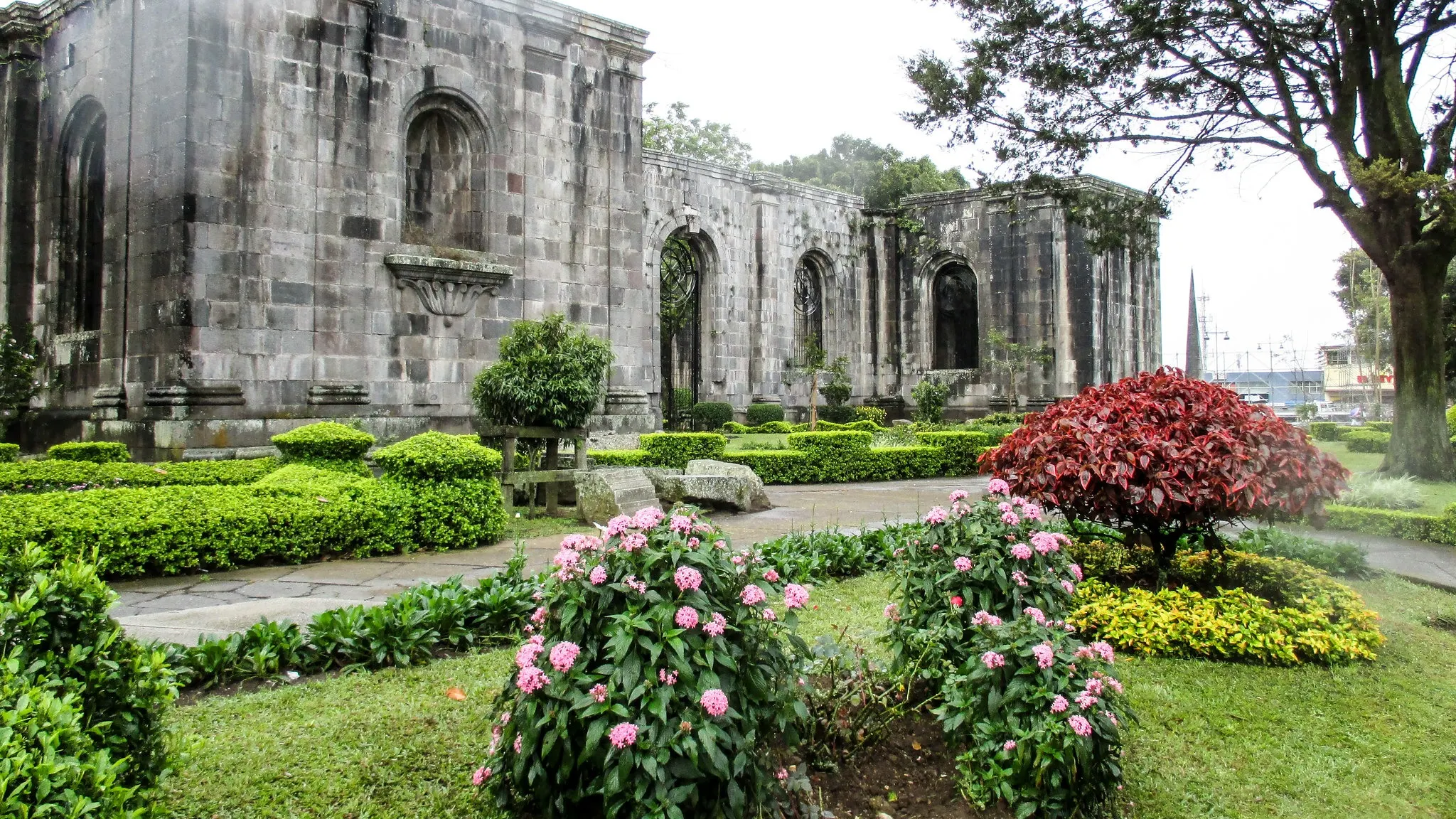
If you’re looking for amenities, then Cartago has you covered. There are country homes and modern condos; there are quaint diners—known as sodas—as well as top-notch restaurants; and you can even find a plethora of boutique shops and four high-end malls. Public transportation is cheap, easy to use, and plentiful. On top of that, all of the national governmental offices are only a 15-minute drive north of the city, meaning there’s no need to travel to San José. All of this makes retirement in Cartago a considerable option, but one often overlooked by folks considering Costa Rica as their new home.
Cartago is also a great place for anyone wanting to escape the heat and humidity of the beaches. Located around 4,000 feet above sea level, average year-round highs are around 78 F, while nighttime lows are in the high 50s F. In fact, when you mention Cartago to any Costa Rican, the immediate response is always, “It’s so beautiful and the climate is so fresh and cool there.”
Lifestyle in Cartago
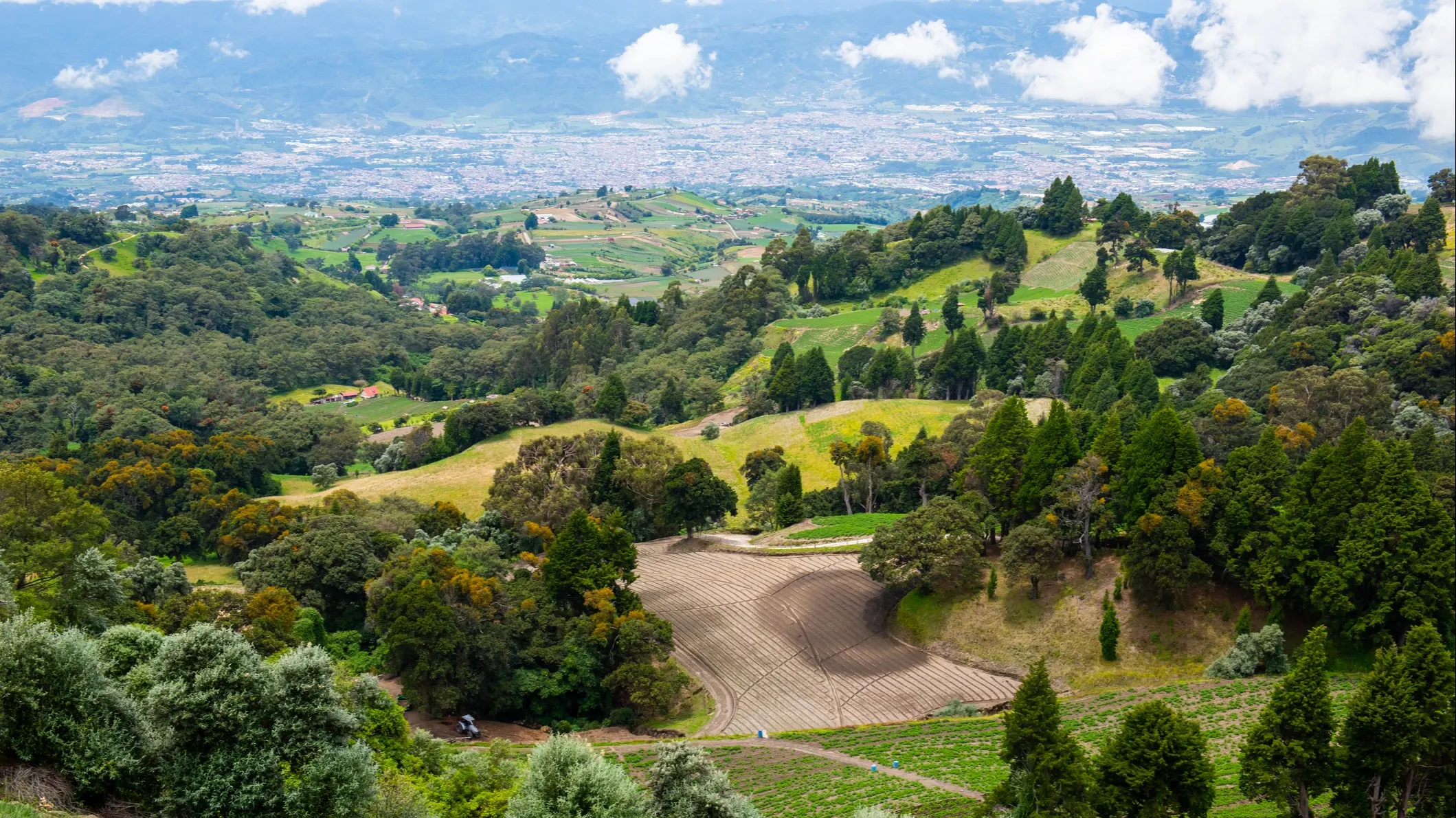
As you’d expect, many of the activities here center around outdoor life.
Cartago is the hub from which to explore, with many potential adventures close by. There’s Lancaster Botanical Gardens, an orchid lover’s paradise; Guayabo National Park, the largest and most important archeological site in all of Costa Rica; Tapantí National Forest, one of the most dense and unexplored jungles of the country; the Talamanca mountain range, with its famed Cerro de la Muerte (the Mountain of Death); or the abandoned—and supposedly haunted—Durán Sanitorium, a favorite destination for adventurers and ghost hunters. White water rafting, mountain biking, waterfall rappelling, horseback riding, nature walks, scenic overlooks, and hot springs are to be found everywhere, too.
If exploring the outdoors isn’t your thing, then there are plenty of options for pampering yourself in Cartago as well. A boutique hotel room can be had for $40 a night. Or upgrade to a private, local resort where you can have an individual bungalow for $75 a night. A full day at the spa with cocktails, dry sauna, steam room, jacuzzi, swimming pool, an hour-long massage, fruit plate, and wine, all outdoors under the shadow of the twin giants—Turrialba and Irazú—will only set you back $70.
If you’re looking for culture, you can enjoy the City Museum, or the ruins of a colossal, ancient cathedral that is the anchor for the Central Plaza and which houses botanic gardens, all for free. There’s also the main building of San Luis Gonzaga High School, the site of the first Central American Supreme Court.
Cost of Living in Cartago
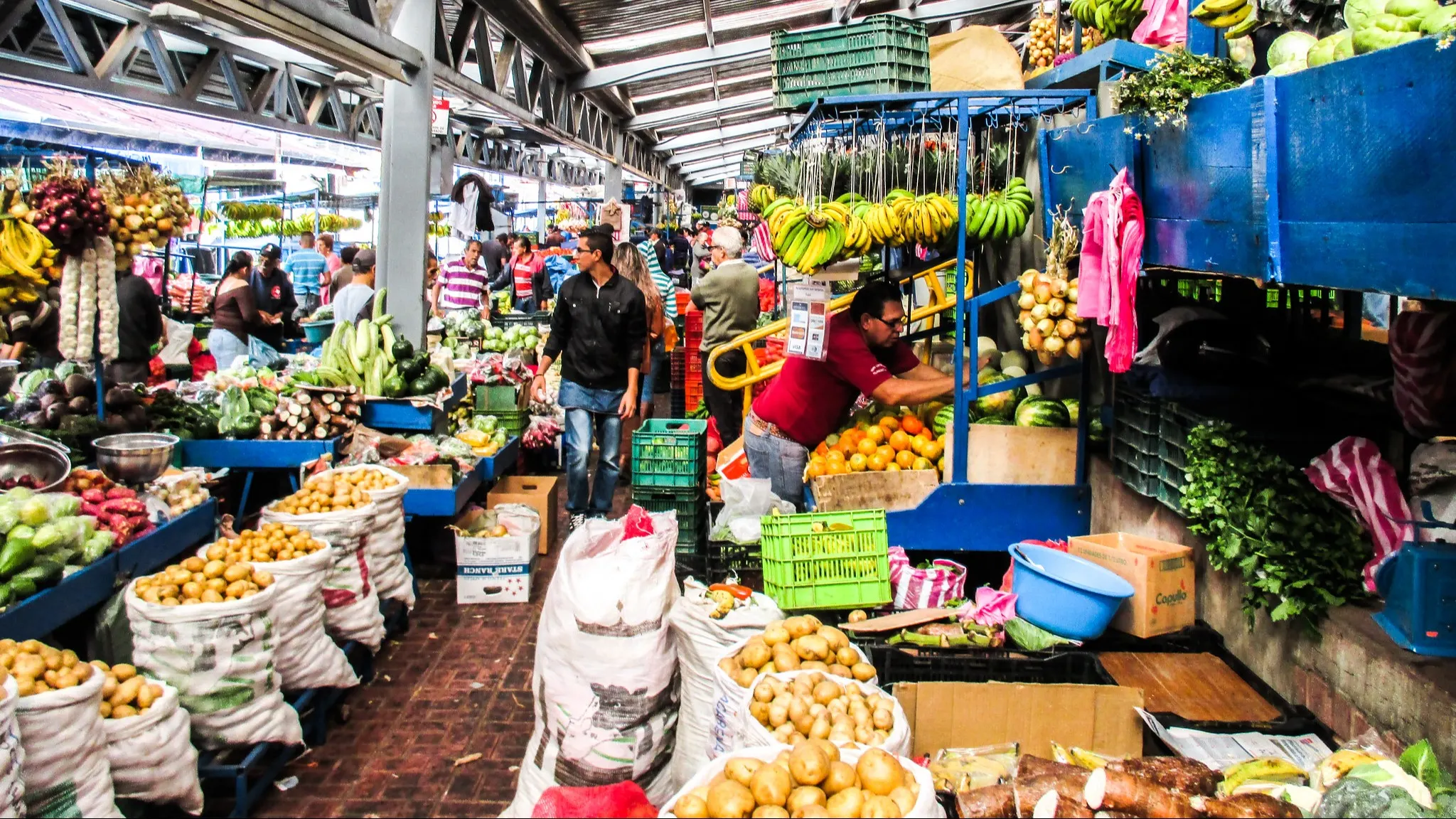
Daily living costs in Cartago are lower than many other areas of the country. There’s a huge central farmers’ market where for a few dollars you can buy bags full of fresh fruits and vegetables. If you prefer to do something indoors, you can see a first-run movie in a state of the art theater with stadium seating. Two tickets, two drinks, and a mega-size caramel popcorn is $15.
If you don’t want to cook at home, any number of places will bring you their casado (a dish of rice, beans, and meat) for around $6.
Here is a rundown of some monthly costs for a couple living in the Cartago area:
| Expense | U.S. $ |
|---|---|
| Electricity | $75 |
| Water | $15 |
| Telephone and internet | $25 |
| Cell phone plan | $30 |
| Satellite TV | $35 |
| Rent | $350 |
Get Your Free Costa Rica Report Here
Get Your Free Costa Rica Report Here
Learn more about Costa Rica and other countries in our daily postcard e-letter. Simply enter your email address below and we’ll send you a FREE REPORT - Explore the Old World in Laidback Costa Rica.

By submitting your email address, you will receive a free subscription to IL Postcards and special offers from International Living and our affiliates. You can unsubscribe at any time, and we encourage you to read more about our Privacy Policy.
Things to Do in Cartago, Costa Rica
By John Michael Arthur
Often, as soon as the plane’s wheels touch down in Costa Rica, tourists run as fast as they can directly to the beach. Both Pacific and Caribbean beaches are within easy striking distance so it stands to reason the country has the reputation for being a beach destination.
But this small jewel of a nation has so much more to offer tourists than just beach life. In the center of the country is Cartago—which translates to English as Carthage. (There seems have been a penchant for using Greco-Roman names for Costa Rican cities: Atenas is Athens and Grecia means Greece.) After a visit to Cartago and its surrounding attractions, you will return home with stories and adventures that none of your other “beach tourists” friends will have ever experienced. In fact, I’ll bet they’ll think you visited a completely different country than they did.
It’s easy to see why the area around Cartago—often considered to be the oldest continually inhabited area of the country—was chosen by both prehistoric indigenous peoples and the colonizing Spaniards as their home. With picturesque mountain views seen from the river valley, a central location for reaching any area of Costa Rica, and its ideal climate, it is not surprising that Cartago was the original Spanish capital. Even though that honor has passed on to San José, Cartago remains a capital of interesting diversions and activities.
So here is my list of 10 things to do in Cartago:
La Basilica de Nuestra Señora de Los Ángeles
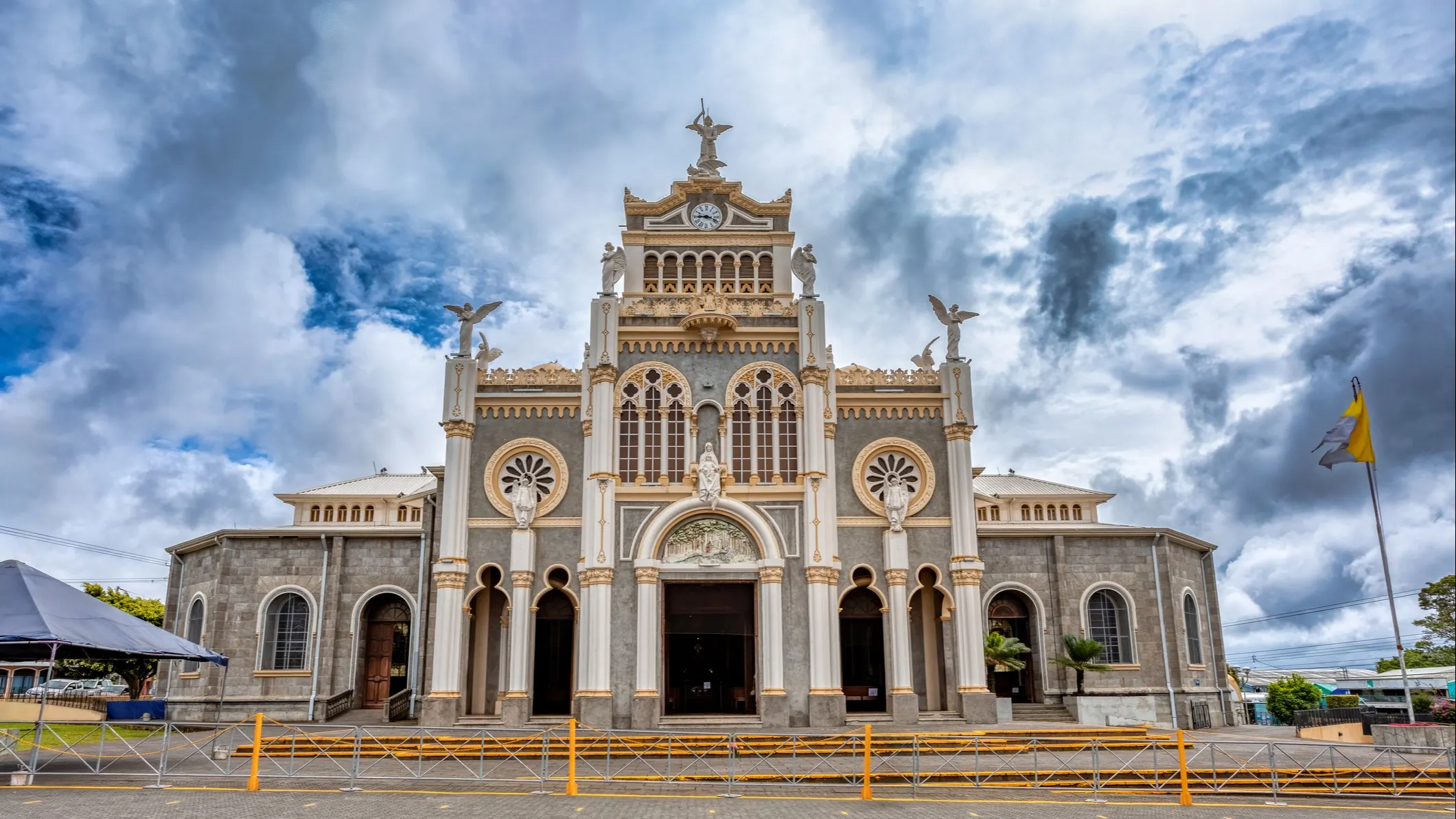
Every list of things to do in Cartago has to begin with this one. An amazingly beautiful edifice, the Basilica, as it is more simply called, is home to the image of the Patron Saint of Costa Rica. Half the population attend an annual pilgrimage which takes place here every August 2 due to a miracle reported here in the mid-1600s.
Ruins of the Iglesia Santiago Apóstol
Not far from the Basilica, you’ll find the central park square of Cartago and these huge ruins. After three separate attempts to build a basilica in this location—all of which were interrupted by some natural disaster—the site was abandoned. The century-old remains of this imposing structure, accessed by a cobblestoned road, now house a beautiful garden that grows in what would have been the interior of the building. The romantic character it exudes is embodied by the young couples you’ll find kissing in its shadows.
Volcano Irazú
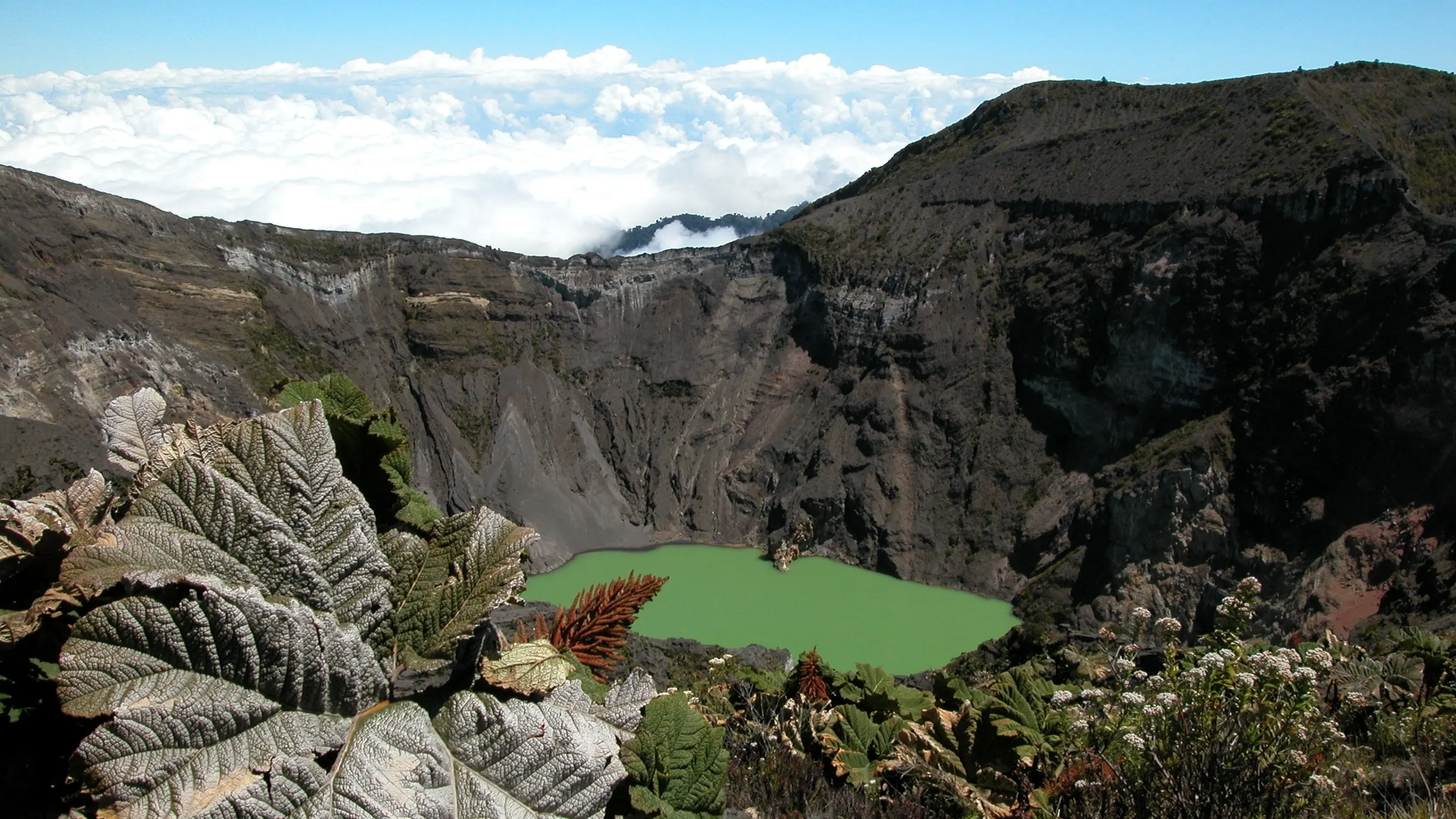
Named after an indigenous Indian word that means “thunderpoint,” Irazú is an ever-present part of the heritage and culture in Cartago. It is the tallest of all the Costa Rican volcanoes and is still considered active. Although it hasn’t had any significant eruption since 1963, it is the sleeping giant that was largely responsible for moving the capital from Cartago to San José. At its summit you’ll find a national park that always reminds me of a moonscape. Once you’re on the site, you’ll walk across a black sand prairie to arrive at the crater lake, filled with eerie green water, all with a backdrop of crystal azure skies. Be sure to take all your warmest clothes for the visit—it’s very cold at 11,000 feet.
Sanatorio Duran
On your way back down from the volcano a perfect stop is the old TB sanatorium. Back before the discovery of antibiotics, when the only treatment for tuberculosis was isolation and healthy living, this sanatorium, developed by Dr. Duran and bearing his name, was considered to be one of the absolute best in the world. In its heyday, it was a medical marvel, with its own operating suites, new-fangled X-ray machines, and even a movie theater. The super-crisp air and healthy farm produce derived from the rich volcanic soils seem to have had an added benefit giving the sanatorium an edge over many others. Today you can wander the abandoned buildings and see where hundreds of people—patients, nurses, nuns, and doctors—all lived and—and died—together. As strange as it may sound, many people think a visit here marks a highlight to their Cartago adventures. But be forewarned: It is purported to be haunted.
River-Running on the Reventazón
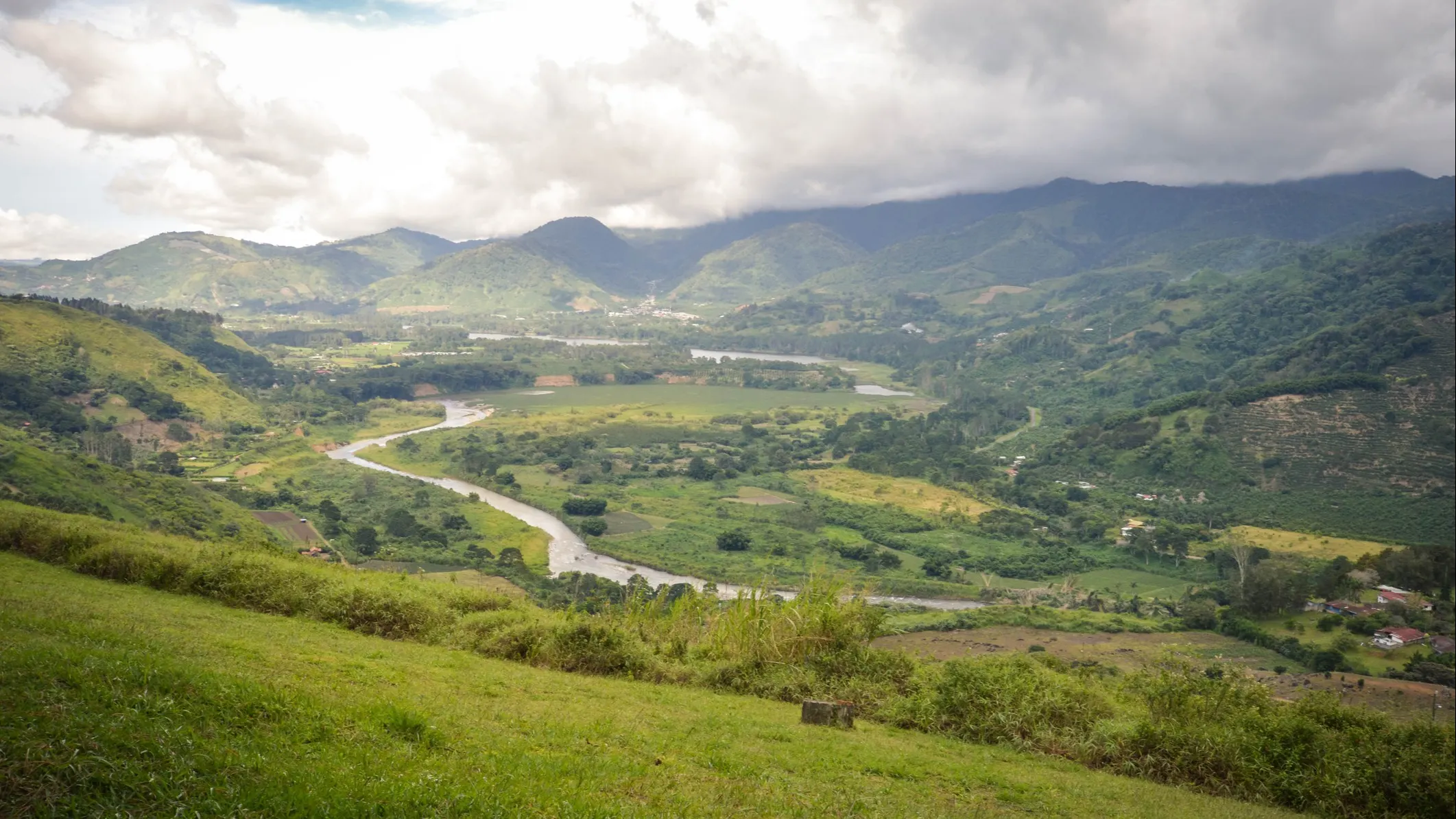
Enjoy an exciting raft ride through the river bottom scenery that has drawn attention for centuries. Plus, there are just enough category three rapids to keep it exhilarating.
Lankester Gardens
British botanist Charles Lancaster moved to Costa Rica in 1910 and began collecting and cataloging orchids. Owing to the incredible number of naturally growing orchids here in Costa Rica, he was in heaven. He bought a large parcel of land, and built his house and his gardens just outside Cartago. Later in life he developed interests in other Costa Rican plants—bromeliads, palms, ferns, etc.—but always maintained his strong affinity to orchids. At his death, he left the entire estate to the University of Costa Rica. Today it is a prepossessing botanical garden and active research center maintained by the University of Costa Rica. Don’t miss out on this lovely little gem.
Tapantí National Park
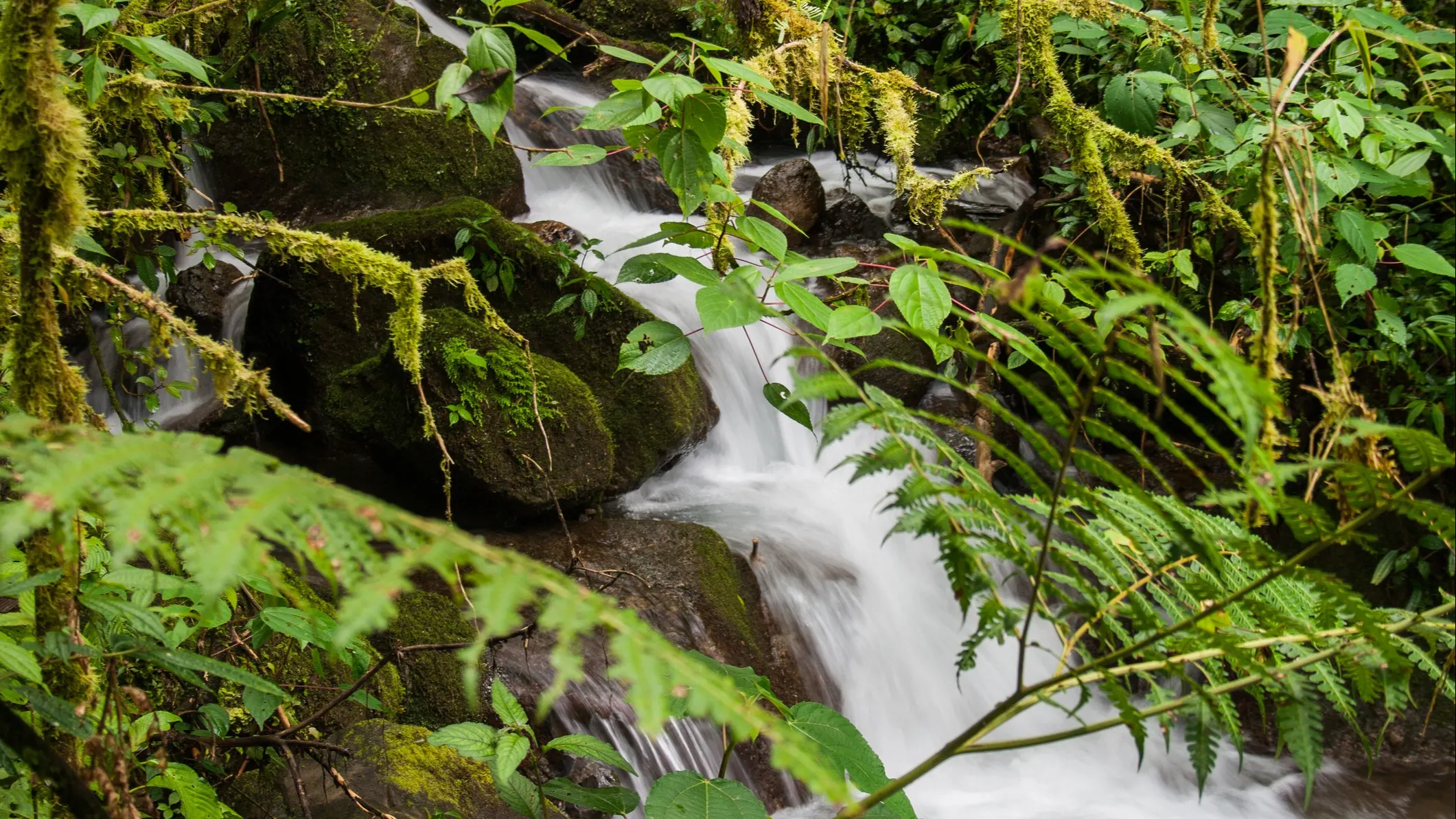
This massive reserve is home to hundreds of Costa Rican species from monkeys, to tapirs, to pumas, and more. It extends far south but the most northern entrance is accessed in Orosi. There are plenty of hiking trails, hidden waterfalls, streams, and picnic spots. But Tapantí is the rainiest of all of Costa Rica—with an average yearly rainfall of over 250 inches—so be prepared.
Municipal Museum
This once military jail, turned prison, turned museum, is located in downtown Cartago. There is an ever-changing display of art by local tico masters. While it is no Louvre, the charm of the local art which is by no means shabby juxtaposed against the old jail cells is something to be seen.
Cachí Hydroelectric Dam

Ticos come from all over to walk along the dam bridge on weekends. I never really understood it—until one day, instead of driving, I got out and walked. It’s pretty spectacular and the sheer power of that water makes you feel pretty small. In fact, this was the first large scale source of renewable energy for Costa Rica, built in the ‘70s.
General Cemetery of Cartago
For those of you who are interested in cemeteries, there are not only some amazing monuments but also many ex-presidents of the Republic and important historic figures interred there.
Just Outside Cartago
Remaining within the Cartago province, but heading 30 minutes or so outside the city, there are a host of other things to see and do.
Rock Climbing
Believe it or not, rock climbing is big here and one of the best sites for this is a Basalt overhang that is located just a bit past the Dam. There are various levels and courses and all the gear you need is rentable right there.
Ruins of Ujarras
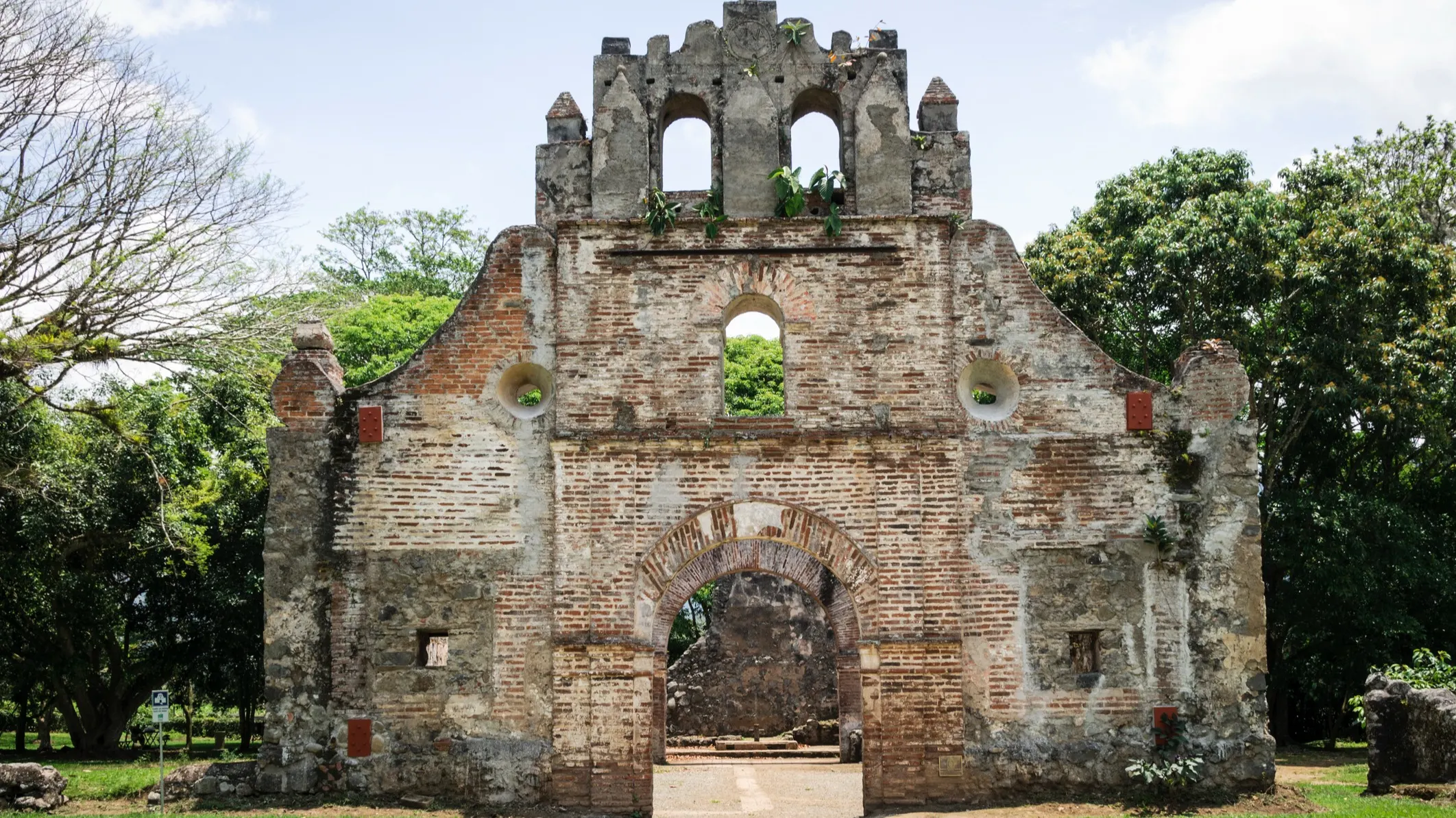
This is the site of Costa Rica's oldest church, dating back to the late 1500s. Due to devastating flooding in 1833, the entire town was moved to higher ground and became the city that is now Paraíso. A lovely park now surrounds these small, but charming church ruins, replete with a small stream and picnic areas.
Balnearios de Aguas Termales
Unlike the natural hot spring parks found near Arenal, this is a large, well-maintained series of swimming pools that are fed by the hot volcanic waters.
Casa del Soñador
This house made of sticks would make the one Little Pig of the famous tale very jealous. It is entirely constructed out of coffee wood and houses wood carvings—all made of coffee wood trunks and roots by Miguel and Hermes Quesada, the sons of the famous Costa Rican sculptor Macedonio Quesada.
Conclusion
The list just goes on and on. I didn’t even mention the Cartago Central Market, the Finca Angelina mountain biking park, the craft brewing company, or the Orosi Mirador.
But I do want to tell you about something you can’t see—just yet. Pura Pora. It is still under construction, but it is a renovation and recreation of a world-famous mineral spa and hot springs and mud bath, surrounded by ancient indigenous peoples’ holy grounds. I’ve had sneak peeks because I know the Israeli family that is bringing it all back to life. It is magical.
If it weren’t for the infamous side of Volcano Irazú, I think Cartago would still be the capital of Costa Rica today. With such incredible weather, even better than San José, and so many spectacular things to enjoy, don’t you think your next trip should include a jaunt to Cartago?
Get Your Free Costa Rica Report Here
Get Your Free Costa Rica Report Here
Learn more about Costa Rica and other countries in our daily postcard e-letter. Simply enter your email address below and we’ll send you a FREE REPORT - Explore the Old World in Laidback Costa Rica.

By submitting your email address, you will receive a free subscription to IL Postcards and special offers from International Living and our affiliates. You can unsubscribe at any time, and we encourage you to read more about our Privacy Policy.
Cartago - Sophisticated Exploration
By Lou Kritz
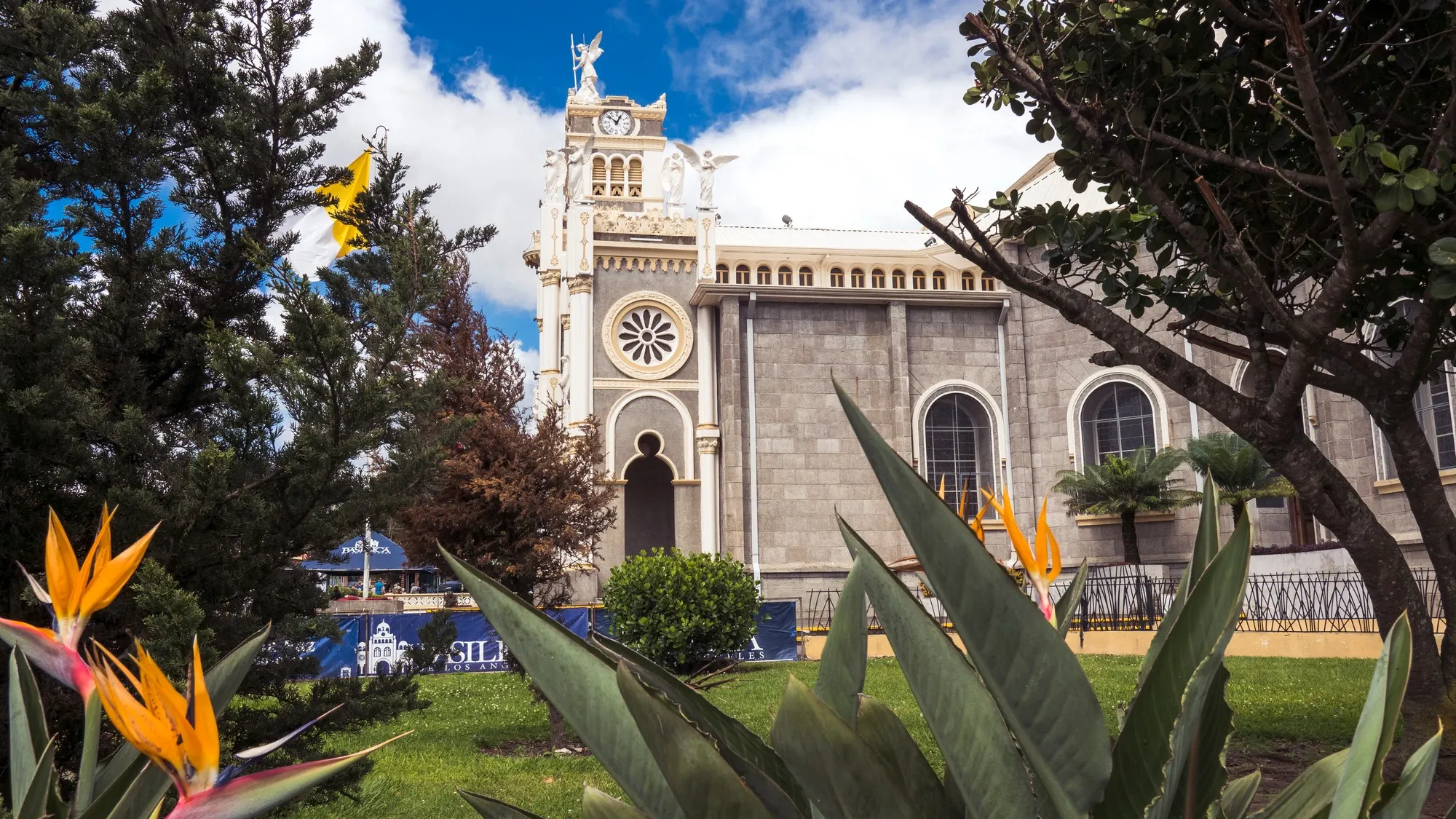
After moving to Costa Rica, finding a somewhat temporary residence, and spending the early days seeing as many tourist vistas as possible, you realize one day that you want to live here permanently. The discussions then turn to "where, and what would daily life be like?" Someone brings up Cartago and you decide to include the city in your group of possibilities.
Cartago in Costa Rica is known as the city where it all started. Juan Vasquez de Coronado, a conquistador, established the settlement, the very first identified town in the country, in 1563, or 458 years ago. It was the capital until 1823 when the national government moved the capital to San José.
The city lies at the eastern edge of the Central Valley of Costa Rica, with a population of slightly over 163,000 people. The number of U.S. and Canadian expats here is slightly less than the national average of 2.8% to 3%, owing to the slightly cooler climate. An elevation of 4,708 feet causes this, creating warm afternoons and cool refreshing evenings. In crow-fly miles, Cartago is about 15 miles southeast of the capital of San José. Quepos, on the Pacific coast, is about 34 miles away, and Limón on the Caribbean coast is 62 miles. While the San José distance is fairly accurate, to the others, doubling the mileage and time is a function of hilly and curvy mountain roads.
Residency Questions
So, what will keep you busy and interested on a daily basis? There is much to see, to do, to be interested in, as you embark on the journey of relaxation and discovery. Following is a compilation of just a small portion of the local opportunities. So, let's begin exploring.
Go for a Walk
A short walking tour introduces you to the almost palpable reverence for history that abounds in the hearts and minds of the residents. There is very old architecture and culture all around, and just about everyone feels it should be protected and appreciated. The town fathers have designated a 100-block area as a Historical Center, thus keeping the historical concepts in the forefront while protecting them from deterioration.
Begin the tour at Plaza Mayor, or Central Park, then stop by the Historical Center and the Mario Sancho Public Library. See Maria Auxiladora Church, an Architecture National Heritage site. Also see Inglesia Santiago Apóstol ruins in the Plaza. It is a Cultural Heritage site. The City Museum and botanical gardens will give you a spot to sit and catch your breath.
The Historical Palace Government Center, in its current form, was constructed in 1958 and, at 63 years old, is considered "new." The original edifice goes back to pre-1821. The Cartago Cemetery is a Historical Heritage site with numerous memorials to the early movers and shakers that built this city. The icing on the cake of all of this history is the Santiago Diocese Cathedral, which is of modern Art Deco design, perhaps the beginning of a new trend.
This list represents just a few heritage sites. Daily walking excursions will introduce many more and will help satisfy your search for history, architecture, beautiful artwork, or the tranquility that comes with meditations in a valued environment.
The Basilica
One cannot appreciate this city if the Basilica is separated from consideration. Considered the jewel in the crown of the city is the La Basilica de Nuestra Señora de Los Ángeles, or the Virgin of the Angels. The patron saint of Costa Rica is revered for her miracle of returning a black stone statue of the Madonna, named La Negrita, to a stone in the fields despite all efforts to keep it inside. The basilica is built around the statue's original rock base and the original statute is safeguarded in the altar area. Believed to have healing powers, visitors come to touch the rock, seeking a miracle.
August 2nd is the feast day of the Virgin and thousands of pilgrims come from all over Costa Rica to visit the church. Open every day of the year, the Basilica is extremely beautiful for its architecture, artwork, and decorative woodwork ceiling and columns. Visiting the basilica will help you understand the reverence paid by Costa Ricans to their patron and how this affects the cultural emphasis on religion.
Learning on a High Level
The Costa Rican Technical Institute, (TEC), with its two Cartago locations, is the premier technical teaching center in the country. Founded in 1971 it is one of the five public university systems that make up the government-backed program of education at this high level. The main campus is located in Cartago, while there are five affiliated TEC campuses around the country. A day visit to the school will show how advanced the education in technology is in this small developing, but not backward, country.
The second location, The Pirie Building, or the city home of the Technical Institute, is actually the building where the school started in 1971. As the institution grew and moved to a major location, the Pirie Building became the school's museum and public activities center. Music programs, art exhibits, and other cultural activities will have you visiting again and again.
A Delicious Benefit
Cartago is blessed with two markets providing fresh, locally-grown fruits vegetables, meats, and more. The Central Market is open six days per week, but closed on Sunday. The shops located within have everything from foodstuffs, to sodas (small local eateries) to souvenirs and dry goods.
The second market is the feria, or farmers' market. It's open only on Saturday from 5 a.m. to 2 p.m., and features foods that were picked early in the morning or the night before. You simply cannot buy fresher good things for your table!
In addition to the market offerings, these markets have become social venues. Small sodas provide fresh mountain coffee, plates of gallo pinto, empanadas, and a relaxing place to meet friends. In addition, if you're a regular customer, the stand holders will become your friends. My wife, Loraine, shops at our weekly feria and her "regulars" always pull out something special for her. Carlos, her green-grocer, saves a bag of our favorite miniature cucumbers for her when they are in season.
Researching Beauty
Travel a short distance (about three miles), out of town to the Lankaster Botanical Gardens. Originally a private garden housing an orchid collection, it was donated to the University of Costa Rica for the collection and research of orchids of all types. Open to the public with free admission it serves multiple functions as a research center, education facility, and beautiful calming gardens to enjoy one of the unique gifts of nature.
The Architecture Continues
The Cartago Municipal Amphitheater is located in the Independence Memorial Plaza next to the Maria Auxiliadora Church. It has a capacity for 400 people, with soft, padded seats and three balconies with wheelchair access.
Here, you can enjoy theater, dance, music, and expositions, among other cultural events. The Amphitheater is extremely modern for this historical city but is designed to blend in with the surrounding environment along with the Maria Auxiliadora Church, Independence Plaza, and the Municipal Theater. The departure from the historical style shows that architecture and design are growing and changing entities that define culture.
Helping Hands
If you are interested in volunteering to help others, Cartago offers many options. One is Hogar Manos de Jesus. or Jesus' Hands Home, a senior center that gives any type of care that is needed by distressed elders. Volunteers often simply just visit and befriend seniors in care, providing companionship and peace.
In addition to this opportunity there are many other options, both private and government-related that offer care and volunteering opportunities. All are easy to find and welcoming.
It's Time to Go!
A great opportunity exists for you as a resident of Cartago to spend your days exploring San José, the capital city, and all that it has to offer. The centers of both cities are about 15 miles apart and an easy drive. If you prefer, there is a full schedule of direct buses and a commuter train.
Buses operate daily from early morning into the evening, at a fare of $0.90. Yes, that's correct! However, if you are over 65 and have achieved residency, the trip is free. Trains operate daily except Sunday from the morning until about 4:00 or 5:00 p.m.. The cost is $1.00.
The train ride is a great experience. It is a narrow-gauge line using retired French passenger cars. It's more leisurely so you can experience the passing scenery and the commuters will welcome you into their comradery. The good news is that the system is being upgraded to a modern interurban light rail system and is in the final design stages. The initial stage is the linking of San José, the system's hub, with the towns of the Central Valley, from San Ramón in the west to Cartago in the east
Now that you know how to get there from your home in Cartago, it's a great opportunity to experience the capital, its history and culture, dining and entertainment options, and shopping. You'll also be happy to learn that Cartago's daily living expenses are a little bit less than San José's.
A Cool Place to Settle
This list of activities is far from complete. The vibrant city offers something to do no matter what your interests are. One of the best experiences, however, is to find that little soda or coffee shop that you visit often for a cup of morning joe and a postre, or pastry. You'll start to make friends who enjoy meeting and getting to know a gringo. Soon, you may just find that Cartago is your happy home.
Featured Image Copyright: ©iStock.com/Dmitry Chulov
Get Your Free Costa Rica Report Here
Get Your Free Costa Rica Report Here
Learn more about Costa Rica and other countries in our daily postcard e-letter. Simply enter your email address below and we’ll send you a FREE REPORT - Explore the Old World in Laidback Costa Rica.

By submitting your email address, you will receive a free subscription to IL Postcards and special offers from International Living and our affiliates. You can unsubscribe at any time, and we encourage you to read more about our Privacy Policy.
